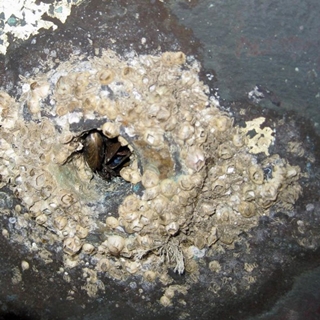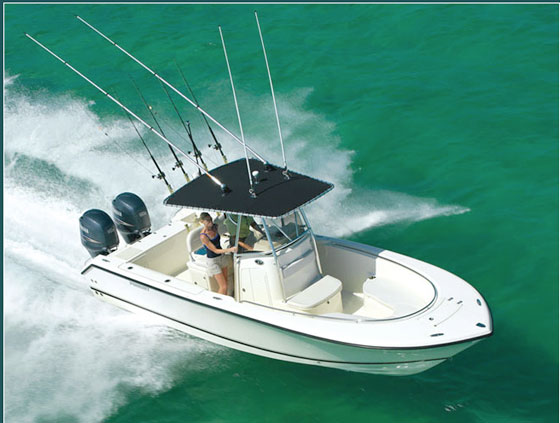Why Are My Through-Hull Fittings Fouled?
Copper in anti-fouling paint can react with bronze through-hull fittings and reduce the paint's ability. Get down to the bronze, epoxy-coat it, and start over.
March 21, 2014
Question: You can see from the photo I sent in that I have a pretty severe problem with the anti-fouling on my boat. We just hauled the boat for maintenance and a new bottom paint job, and I saw this on several of my though-hull fittings.

Barnacles, and in this case even mussels, can clog raw-water intakes and cause engine-cooling problems upstream.
The mussels growing inside the water intake were a real surprise. Is there anything I can do to stop this from happening again?
Answer: Yikes! Barnacles I’ve seen before in this situation -- mussels, never. Anyhow, there are several things you haven’t told us. One, how long has it been since you hauled the boat for this maintenance? Two, the last time you painted, did you paint with anti-fouling paint up inside the through-hull fitting?
Furthermore, it looks like the anti-fouling paint in the area around the through-hull fitting had begun to “halo,” as we refer to this phenomenon in the industry. This halo effect is most prevalent with black-colored anti-fouling paints in my experience, and in your case it actually impacted the effectiveness of the paint; hence, the extreme barnacle growth. This is all caused by an electro-chemical reaction between the bronze through hull fitting and the copper in the anti-fouling paint. This reaction may have also impacted the effectiveness of any anti-fouling that was applied up inside the through hull fitting as well, hence the new home for the mussels.
The easiest way I know of to deal with this problem is to thoroughly clean the existing mess and remove all of the residual anti-fouling on the bronze through-hull fitting. Get down to clean, bronze metal. Next, apply some two-part epoxy barrier coat to the metal, and to the hull in close proximity to the through-hull fitting. Be sure to paint up inside the fitting as far as you can get in with a small brush. Once the barrier coat has cured, reapply anti-fouling paint.
Following this procedure will cure the haloing problem and extend the service life of the anti-fouling paint. As for the actual service life of the paint, it will vary depending upon the type of paint, the thickness of the paint coating, and the boat's locale. In my experience, an expectation of two full years of service life from a quality bottom paint job on a typical recreational boat may be pushing things a bit. This will of course vary depending on the factors I just mentioned, as well as water temperature and how often you use the boat.












